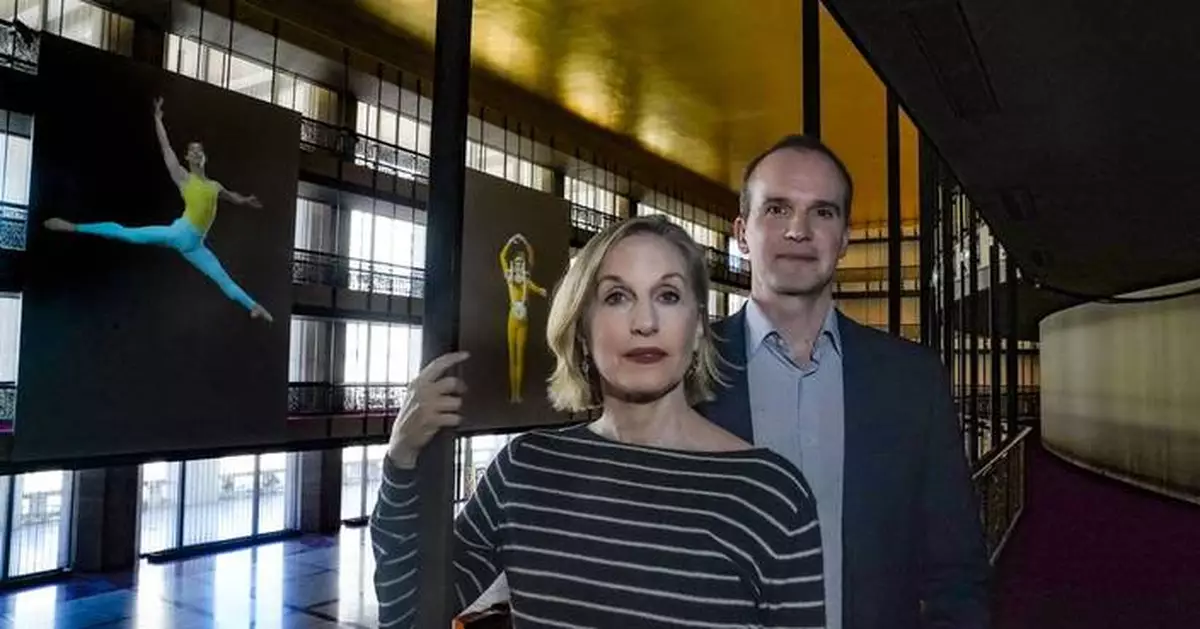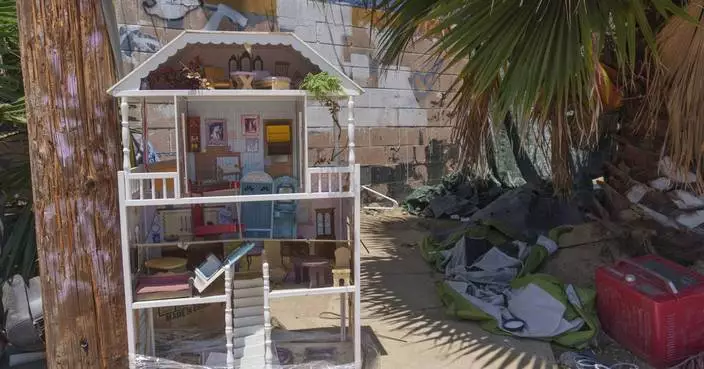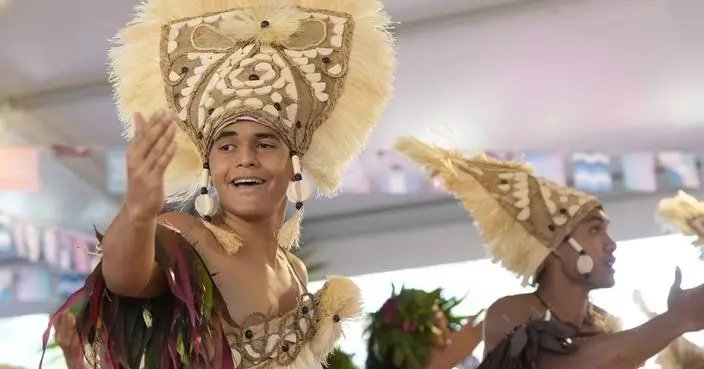NEW YORK (AP) — Alice McDermott settled into her seat at New York City Ballet on a recent Friday night, excited to see her first-ever ballet performance. The 31-year-old Manhattanite, who works in recruiting, was on a fun girls' night out with three friends she’d met through work, starting with dinner.
“They told me I’d love the ballet,” says McDermott, who was also excited to realize she was already familiar with one of the evening’s performers, Tiler Peck, via the dancer’s popular Instagram feed. “They said you can put on a nice dress and just immerse yourself in another world, whilst marveling at what the human body can achieve.”
Seems they were right: At the end of the evening, McDermott, a new fan, went home and watched a ballet documentary.
Perhaps you could call it “Ballet and the City”? Whatever the term for McDermott’s ballet evening with pals, the scenario would surely be music to the ears of the company — which has been celebrating its 75th birthday with fanfare this year — and especially its artistic leaders of the past five years, Jonathan Stafford and Wendy Whelan.
The two, both former dancers at the storied troupe founded by George Balanchine, have made it a key goal to bring in a younger audience to ensure the company's long-term health — and more broadly, to guard the vitality of a centuries-old art form.
It seems to be working. Though some initiatives have been in place for longer, the last five years have seen a marked shift, according to numbers provided to the Associated Press: In 2023, 53% of ticket buyers were under age 50, and people in their 30s made up the largest age segment by decade. Five years earlier, in 2018, 41% of ticket buyers were under 50, and people in their 60s made up the largest age segment.
Now, longtime ballet followers note that on a bustling Friday evening you can look down from the first ring of the David H. Koch Theater at Lincoln Center and not simply see, well, a sea of gray.
A major factor in attracting younger people, especially those under 30, has been affordable pricing. There are also evenings targeting young professionals, including post-show receptions. And there have been collaborations with visual or musical artists with youthful followings — like the musician Solange, who in 2022 was commissioned to score a ballet by 23-year old choreographer Gianna Reisen.
The Solange collaboration was a significant moment, Whelan and Stafford said in a recent interview, surveying the past five years as the thumping of leaping dancers’ feet echoed through the ceiling above Stafford's office.
“We sold out every show,” Whelan noted. “It was a little nugget, but it was memorable.”
Perhaps even more important was the fact, says Stafford, that about 70% of those ticket buyers were new to the company — contributing to “a generation of young professionals in the city that are at our theater every night now.”
Katherine Brown, the ballet’s executive director, said the company had taken a look at the theater and vastly reduced the price of certain seats — and saw them fill up. She also noted the 30-for-30 program, where members under 30 can buy any seat in the house for $30. “That thing has just exploded,” Brown says, from some 1,800 members in the last full season before the pandemic-forced shutdown, to some 14,000 now.
One can’t discount the “pure economics” of an evening at the ballet, especially for young people, says Wendy Perron, longtime dance writer and former editor of Dance Magazine. “When I was in New York in the ’70s and ‘80s, I just couldn’t afford to go to the ballet," she says.
Also not to be discounted: the effect of social media in promoting dancers as people with personalities.
“We’ve got this crop of really exciting but also relatable, approachable dancers, and through social media, audiences can connect to them in a way they couldn’t back when we were dancing,” says Stafford, who retired as a dancer in 2014.
Consider Peck, one of the company’s most popular ballerinas (and a rising choreographer), whose Instagram feed had reached McDermott before she ever saw her dance. Peck supplies her half-million followers with short, punchy videos about everything from her 10 favorite dance roles to how she applies stage makeup. Her videos often feature her partner onstage and off, rising principal dancer Roman Mejia.
It’s all very different from a time when — like Odette in “Swan Lake” — ballerinas used to be mysterious and, above all, silent.
Social media — whether used by the company or via the dancers’ own feeds — can also answer questions. If you attended a performance of “The Nutcracker” a few seasons ago, you might have wondered why dancer Mira Nadon, as Sugarplum Fairy, suddenly disappeared from the stage at a key moment. The answer was on her Instagram later: Her pointe shoe had slipped off.
“See, you can get all your answers from Instagram now,” quips Whelan, who herself has an active feed.
A few months ago, Whelan, a much-loved former NYCB principal who also retired in 2014, got a congratulatory text from Stafford in the morning — it had been exactly five years since the two had taken the helm after a turbulent period when #MeToo accusations caused scandal.
Historically, the company had been led by one man — Balanchine until 1983, then Peter Martins. This time, the board tried something new: a duet. Stafford was already interim head, and Whelan had applied for the job.
“They put us in a room and closed the door, and we were like – ‘Hi?’” Whelan says. “They were like, figure it out! And we did.” Stafford, the artistic director, serves as a bridge between the creative and business sides. Whelan, associate artistic director, focuses on the delicate task of programming.
Company insiders describe a mood different from the days when one outsized, all-powerful personality ruled from above. For one thing, the pair says they've instituted annual taking-stock conversations with each dancer.
Diversity — ballet is slowly changing but still overwhelmingly white — is also a priority, they say, and that includes diversifying “the pipeline,” meaning students at the affiliated School of American Ballet.
Recently, the company heralded its first two Black dancers to dance Dewdrop, the second most important female “Nutcracker” role: India Bradley and guest artist Alexandra Hutchinson of the Dance Theater of Harlem. Yet to come is a Black Sugarplum Fairy. The company says 26% of of its dancers identify as people of color, whereas 10 years ago that figure was 13%. Stafford and Whelan have commissioned 12 ballets by choreographers of color in the last six years, it says.
“We know where the gaps are, and we take it seriously,” Whelan says.
She and Stafford say they're also paying more attention to wellness, be it physical training to avoid injury, healthy diets, or a more frank discussion of mental health.
As for the company's financial health, it is strong, Brown says, four years after the pandemic cost tens of millions in losses The 2024 budget is roughly $102 million, compared to $88 million in 2019. Audience capacity has exceeded pre-pandemic levels.
As for new fan McDermott, she's planning more visits, along with her friends.
“I think we have a new tradition between the four of us,” she says. “We’ll definitely be making it a bit of a thing.”
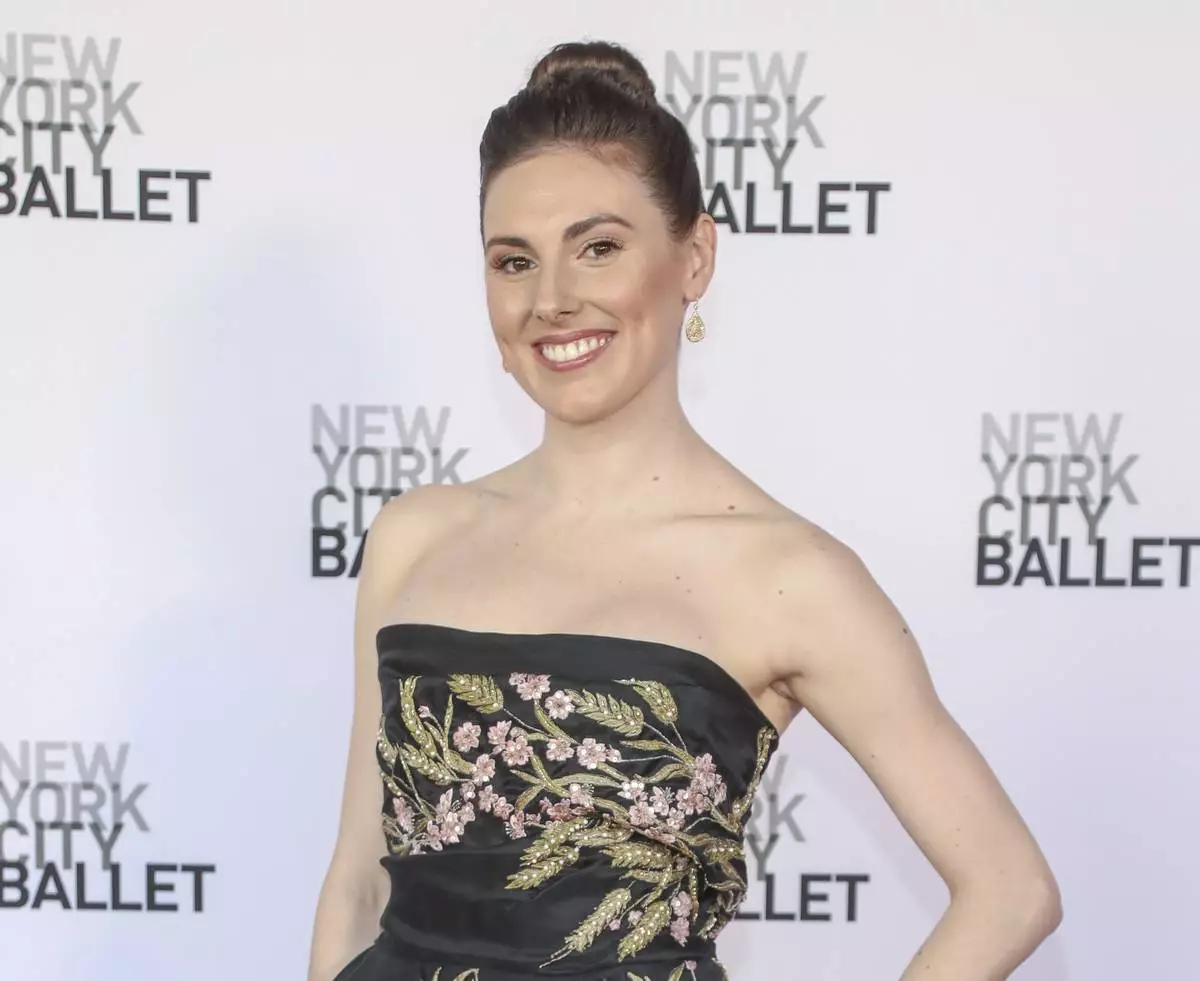
FILE - Ballet dancer Tiler Peck attends the New York City Ballet Spring Gala at the David H. Koch Theater on Thursday, May 2, 2024, in New York. (Photo by Andy Kropa/Invision/AP, File)
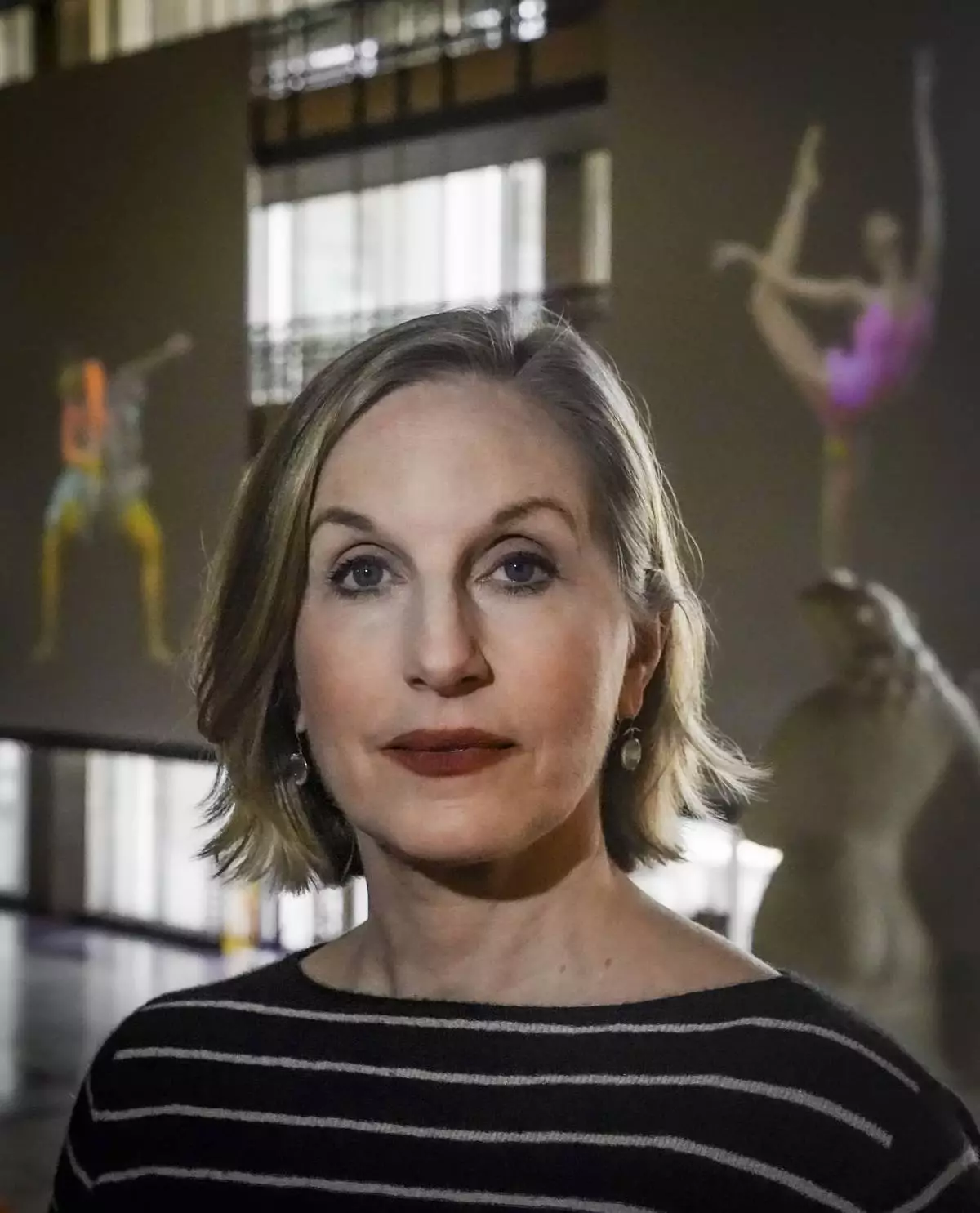
New York City Ballet's associate artistic director Wendy Whelan poses inside the lobby of the David H. Koch Theater at Lincoln Center, Thursday, Feb. 29, 2024, in New York. (AP Photo/Bebeto Matthews)

New York City Ballet's artistic director Jonathan Stafford poses inside the lobby of the David H. Koch Theater at Lincoln Center, Thursday, Feb. 29, 2024, in New York. (AP Photo/Bebeto Matthews)
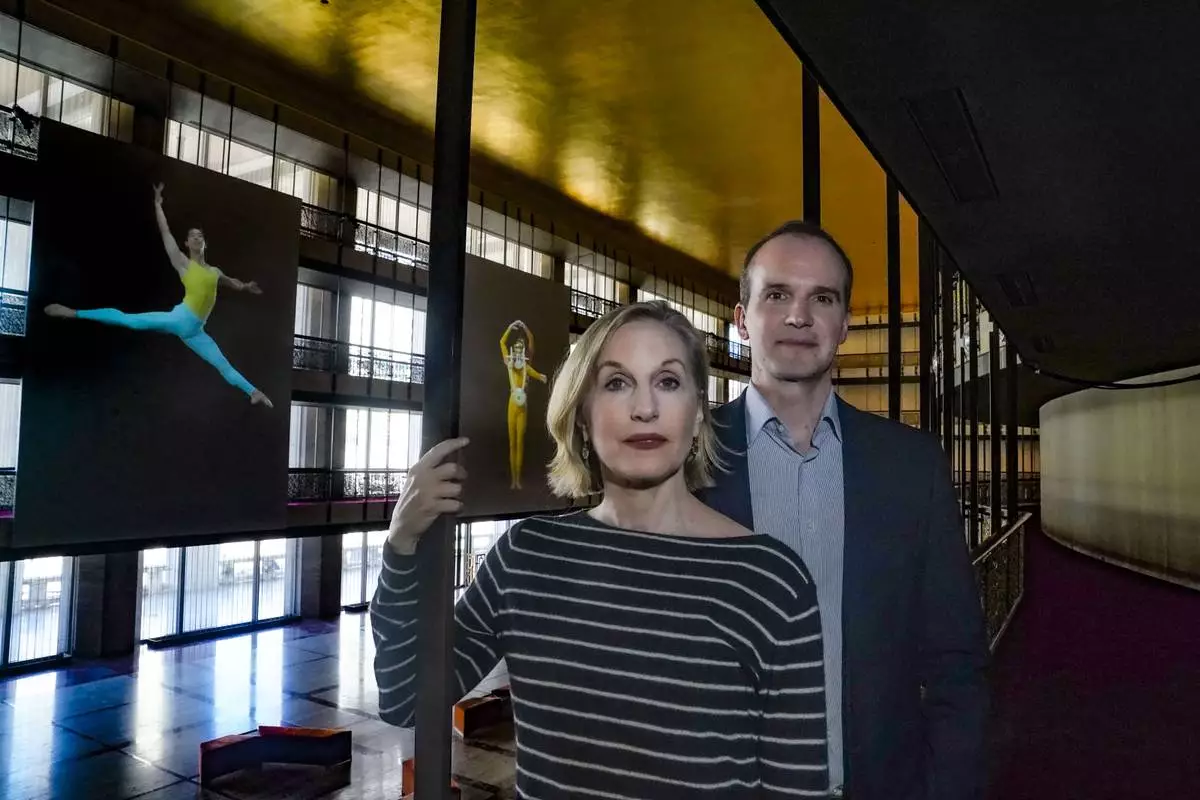
New York City Ballet's artistic director Jonathan Stafford, right, and associate artistic director Wendy Whelan pose inside the lobby of the David H. Koch Theater at Lincoln Center, Thursday, Feb. 29, 2024, in New York. (AP Photo/Bebeto Matthews)


